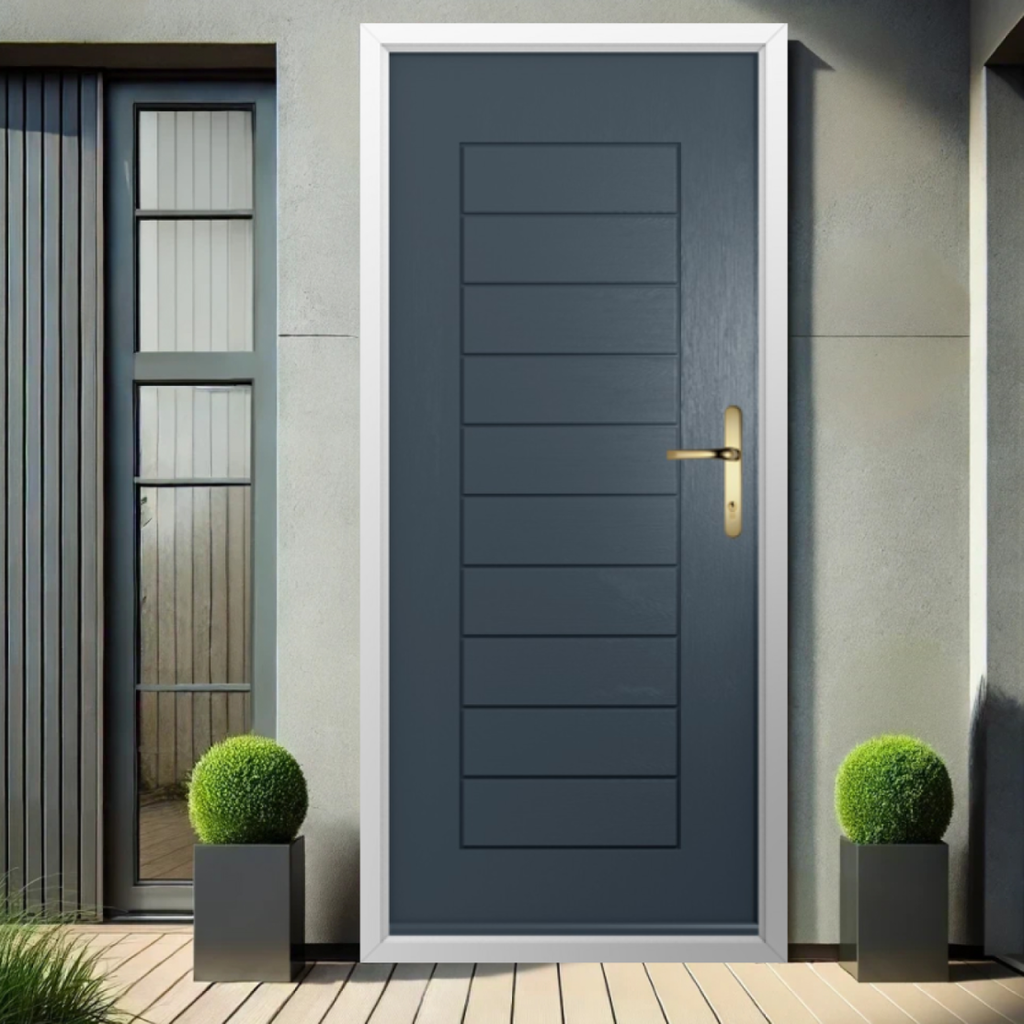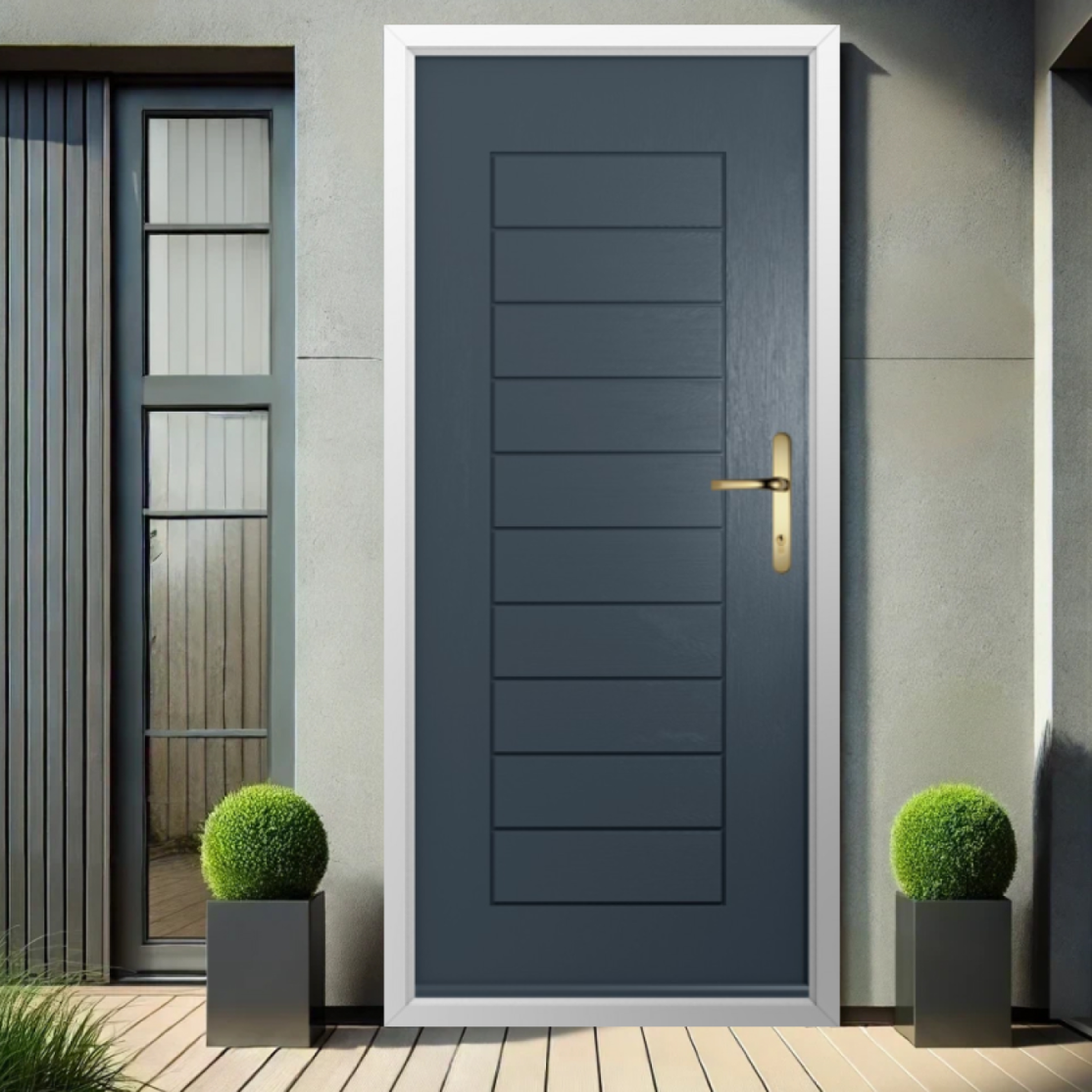Last Updated on 1 August 2025 by Team GFD
Compare a solid core composite door with foam filled composite doors to understand strength, insulation, price and which suits your home best.
What You’ll Learn:
- What makes a solidor core composite door different from foam-filled ones
- Pros and cons of each door type including price, strength, and feel
- When to choose solid core vs foam core based on your needs
- Honest answers to common questions about security and longevity
(Estimated Reading Time: 4-5 Minutes)

Introduction
What’s the difference between a solid core composite door or foam filled composite doors?
A Solid core composite door use a dense timber inner core for strength, weight and durability, while foam core doors are lighter, using polyurethane foam for insulation and cost-efficiency. Both are secure and weatherproof, but they differ in performance, lifespan, and price. In this blog, we explain the pros and cons of each – helping you decide which is right for your home.
Solid Core vs Foam Filled: So What’s the Real Difference?
Choosing a new front door can feel like comparing apples to apples – until you scratch beneath the surface. One of the biggest differences you’ll find in composite doors is what’s inside: the core. That core determines how strong, secure, efficient and long-lasting your door really is.
At GFD Homes, we offer both types:
✅ Solid timber core (used in Comp Door and Solidor)
✅ High-density foam core (used in Door-Stop doors)
Both do the job – but they each come with their own benefits depending on your needs and budget.
What Is a Solid Core Composite Door?
A solid core composite door has a 48mm thick slab of engineered timber running through the centre. This dense timber gives the door extra weight, superior strength, and a more ‘solid’ feel when closed.
Examples:
Benefits:
- High security (stronger resistance to impact and forced entry)
- Naturally insulating – better thermal performance
- Feels premium and substantial
- Long lifespan with proper maintenance
- Excellent soundproofing
Considerations:
- Heavier (may require additional hinges or upgraded frame)
- Slightly higher price point
Ideal for: Homeowners wanting premium performance, security, and kerb appeal with traditional or modern styling.
What are Foam Filled Composite Doors?
Foam filled composite doors use a high-density polyurethane foam at the centre, encased in a GRP (glass-reinforced plastic) outer skin. These doors are lighter, easier to manufacture, and more affordable – while still offering solid performance.
Example:
- Door-Stop – A popular and trusted foam core composite door
Benefits:
- Lightweight – easier to install and handle
- Lower cost – excellent value for landlords or first-time buyers
- Still PAS 24 certified for security
- Wide range of designs and colour options
Considerations:
- Less thermal mass – slightly higher U-values
- May not feel as substantial as timber-core alternatives
- Slightly more flex under pressure
Ideal for: Budget-conscious buyers, rental properties, or anyone needing a quick, reliable upgrade.
Side-by-Side Comparison
| Feature | Solid Core Doors | Foam Core Doors |
|---|---|---|
| Core Material | Engineered timber | High-density PU foam |
| Security | Exceptionally strong | PAS 24 compliant |
| Thermal Efficiency | Lower U-values (e.g. 1.4 W/m²K) | Good, slightly higher U-values |
| Weight | Heavy, sturdy | Lightweight, easy to handle |
| Feel | Premium, robust | Smooth, lighter close |
| Price | Mid to high-end | More affordable |
| Brands @ GFD | Comp Door, Solidor | Door-Stop |
Which One Should You Choose?
That depends on your priorities:
✅ Want ultimate strength, thermal performance, and a door that feels rock solid? Go solid core.
✅ Need a reliable, budget-friendly upgrade for a home or rental? Foam core does the job well.
Either way, we’re here to help you compare and choose with confidence – not confusion. And whichever option you pick, it’ll be backed by GFD Homes’ expert support, trusted guarantees, and the peace of mind that comes from buying from people who genuinely care.
Conclusion
Whether you’re after rock-solid strength or a lighter, budget-friendly upgrade, understanding the core difference matters. A solid core composite door delivers premium security, insulation, and that satisfying, heavyweight feel—ideal for homeowners who want long-term performance. On the other hand, foam filled composite doors are still secure and weatherproof, but more cost-effective and easier to handle—great for landlords or everyday upgrades.
At GFD Homes, we stock both types from trusted brands like Solidor, Comp Door, and Door-Stop—so you can weigh up your options without sales pressure. Need help choosing? Our team’s here to talk you through it, no jargon, no fluff.
🛒 Browse online: www.gfdhomes.co.uk
📞 Or Call us: 01642 309576 for expert advice
In a rush? Why not contact us via Whatsapp
Browse our related articles
- Door Stop : Everything You Need to Know
- Solidor Composite Doors: Everything You Need to Know
- Comp Door: Everything You Need to Know
- Trade Composite Doors: looking for trade prices? Visit our trade site, The Trade Village
FAQ’s Homeowners Ask
“Is a solid core door really worth the extra cost?”
If you want longevity, maximum strength, and the lowest U-value possible, then yes – it’s an investment in comfort and security.
“Do foam core doors still meet security standards?”
Yes – reputable brands like Door-Stop meet PAS 24 standards and include multi-point locking systems.
“Will a solid core door warp or expand in heat?”
Not ours. Comp Door, for example, uses a unique core and CoolSkin technology that’s engineered to resist thermal movement.
“Do both types come in the same styles and colours?”
Yes! All our brands offer great style choices. The core doesn’t limit design – it just affects performance.

